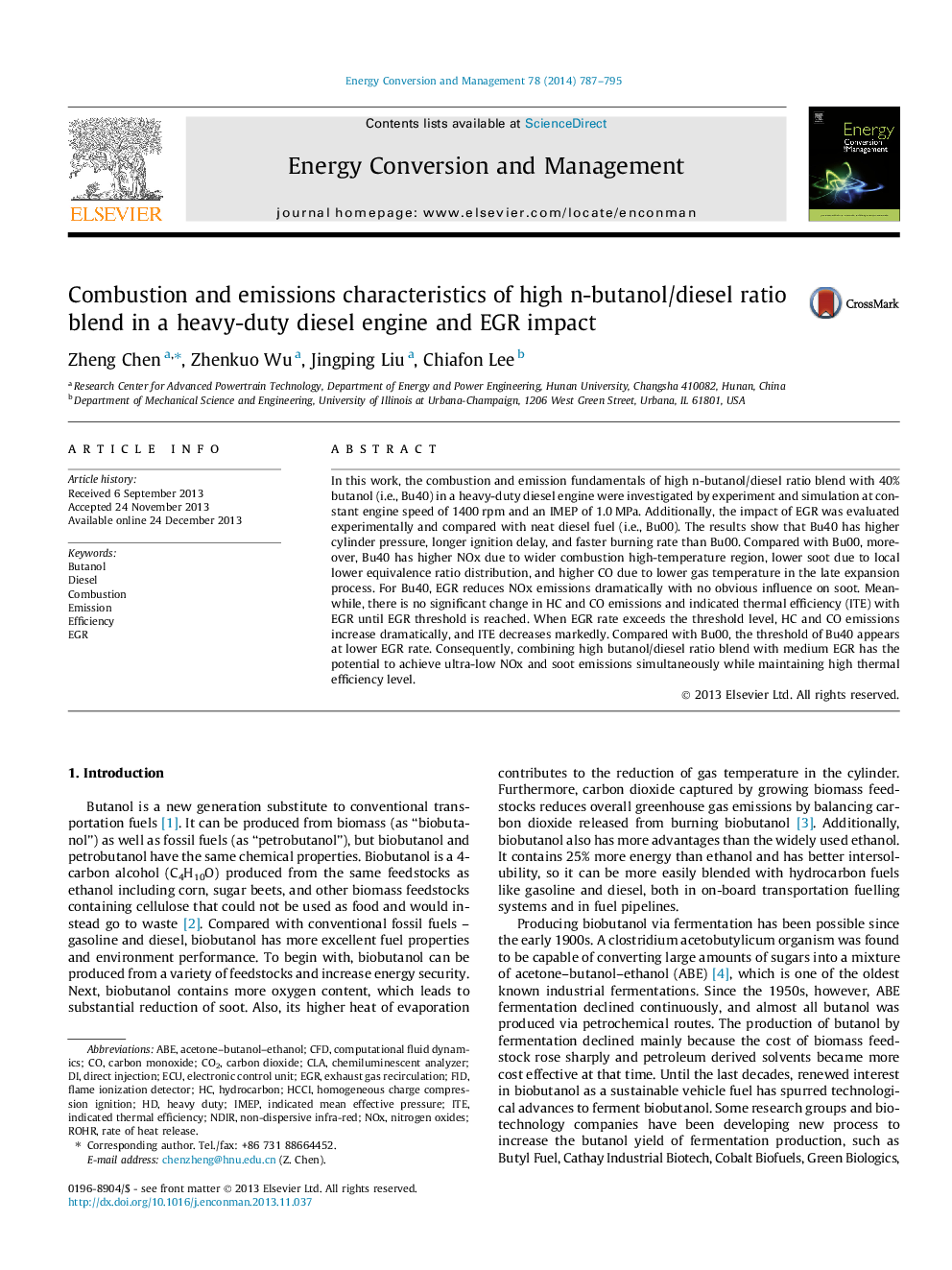| Article ID | Journal | Published Year | Pages | File Type |
|---|---|---|---|---|
| 764134 | Energy Conversion and Management | 2014 | 9 Pages |
•Effects of EGR on high n-butanol/diesel ratio blend (Bu40) were investigated and compared with neat diesel (Bu00).•Bu40 has higher NOx due to wider combustion high-temperature region.•Bu40 has lower soot due to local lower equivalence ratio distribution.•Bu40 has higher CO due to lower gas temperature in the late expansion process.•For Bu40, EGR reduces NOx emissions dramatically with no obvious influence on soot.
In this work, the combustion and emission fundamentals of high n-butanol/diesel ratio blend with 40% butanol (i.e., Bu40) in a heavy-duty diesel engine were investigated by experiment and simulation at constant engine speed of 1400 rpm and an IMEP of 1.0 MPa. Additionally, the impact of EGR was evaluated experimentally and compared with neat diesel fuel (i.e., Bu00). The results show that Bu40 has higher cylinder pressure, longer ignition delay, and faster burning rate than Bu00. Compared with Bu00, moreover, Bu40 has higher NOx due to wider combustion high-temperature region, lower soot due to local lower equivalence ratio distribution, and higher CO due to lower gas temperature in the late expansion process. For Bu40, EGR reduces NOx emissions dramatically with no obvious influence on soot. Meanwhile, there is no significant change in HC and CO emissions and indicated thermal efficiency (ITE) with EGR until EGR threshold is reached. When EGR rate exceeds the threshold level, HC and CO emissions increase dramatically, and ITE decreases markedly. Compared with Bu00, the threshold of Bu40 appears at lower EGR rate. Consequently, combining high butanol/diesel ratio blend with medium EGR has the potential to achieve ultra-low NOx and soot emissions simultaneously while maintaining high thermal efficiency level.
